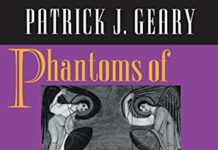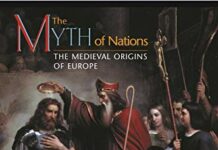
Ebook Info
- Published: 1991
- Number of pages: 248 pages
- Format: PDF
- File Size: 16.72 MB
- Authors: Patrick J. Geary
Description
To obtain sacred relics, medieval monks plundered tombs, avaricious merchants raided churches, and relic-mongers scoured the Roman catacombs. In a revised edition of Furta Sacra, Patrick Geary considers the social and cultural context for these acts, asking how the relics were perceived and why the thefts met with the approval of medieval Christians.
User’s Reviews
Editorial Reviews: Amazon.com Review Saints are special kinds of heroes. They are of little interest as everyday people; their real significance lies in the way they exemplify universal values given by God. In Furta Sacra: Thefts of Relics in the Central Middle Ages, Patrick J. Geary devotes microscopic attention to the way medieval Christians and merchants raided tombs, plundered churches, and scoured the Roman catacombs in order to obtain sacred relics. Although Geary rejects the notion that cults of saints were “pure manifestations of religious devotions” devoid of cultural associations, he honors the religious impulses of some truly outrageous behavior. Geary’s study is academic and a bit of a brain stretcher, but it’s fairly short and worth close attention. In describing how hagiography mirrored the values of medieval society, he provides a helpful road map for alert readers interested in contemporary cults of saints. When Evangelicals honor C.S. Lewis, for instance, or South American Christians remember Eva Peron, or even when movie memorabilia collectors pay big bucks for Dorothy’s ruby slippers, they relive a very old dream of bringing humanity’s highest ideals down into earthly form. –Michael Joseph Gross Review “[This] is a superb book, original and immaculate in scholarship, elegant in style and though.”—R. I. Moore, Times Higher Education Supplement”A shrewd, interesting, and helpful study.”—C. N. L. Brooke, History”Geary is at his best in unraveling the tangled accounts of individual thefts to suggest the reasons for their occurrence and in describing the central role of saints and their relics in this age. His exposition of the medieval view that saints resided with and participated actively in the affairs of the communities possessing their relics is essential to understanding the function of saints in this society and the desire of communities to steal or, as he argues, to ‘kidnap’ them.”—John M. McCulloh, American Historical Review”This is a fascinating study of a medieval way of thinking which in certain circumstances countenanced thefts of sacred relics from tombs, churches, and Roman catacombs. . . . Furta Sacra is a truly impressive history shedding much light on a difficult dimension of popular Christian piety in another age.”—Michael Connors, Church History From the Back Cover To obtain sacred relics, medieval monks plundered tombs, avaricious merchants raided churches, and relic-mongers scoured the Roman catacombs. In a revised edition of Furta Sacra, Patrick Geary considers the social and cultural context for these acts, asking how the relics were perceived and why the thefts met with the approval of medieval Christians. About the Author Patrick J. Geary is Professor of History at the University of Florida. Read more
Reviews from Amazon users which were colected at the time this book was published on the website:
⭐One of the only books I could find on the theft of holy relics. Fortunately, it’s exceptionally well written and entertaining. I used it as a primary source on an art history paper about the St. Foy Reliquary. That paper would not have been possible without this resource. Thank you Mr. Geary for this excellent book and your professional insight.
⭐excellent addition to my library
⭐This book arrived on time and in excellent condition. The book itself was also an entertaining and informative.
⭐Utterly fascinating
⭐just as I expected
⭐I purchased this book for a college class. Good quality. Shipped fast. Reasonable price. I am happy with my purchase.
⭐Patrick Geary’s “Furta Sacra” situates the furtive relic translations in their social and cultural context in order to enrich a modern understanding of relics. In the Middle Ages, relics were acquired to provide protection and to give communities a sense of identity in a politically fragmented Europe. Furthermore, they contributed to the local economy by attracting patronage and pilgrimage. Geary notes that relics are a “human phenomenon” and recounts stories of theft in order to highlight the medieval mindset. Professional thieves like Deusdona stole the relics in order to supply the demand in communities across France, Germany, and Italy. Demand was especially high under the Carolingian Empire, as all altars were required to contain relics, and pilgrims were encouraged to journey to the tombs of saints. As communities acquired new relics, they crafted narratives about the theft and acquisition in order to accentuate the value of the relic, and to assert ownership of the relic. The furta sacra deviate from reality as they were shaped to “make acceptable the presence of a saint’s body in a remote monastery with which he never had any connection” (13). Like the liturgy, these accounts tended toward “schematization and stylization” (13). Nevertheless, they expose the calculated way in which value and legitimacy were accorded to relics by their communities. Relics had to be legitimized in order to uphold the community’s reputation and to inspire religious devotion among its citizens. When studying the past, we must remember to go beyond the written text in order to explore the social and cultural persuasions of its authors and community. Geary writes, “… medieval religious culture is a mosaic and can be understood not simply by examining each particle of stone or glass, but by observing the whole system in which these pieces are used” (17).
⭐I enjoyed this book in part because the stories of relic thefts, and the lives of the stolen Saints, sometimes seemed too improbable to be true, and yet one cannot deny the obvious impact those same stories had (whether true or not seems irrelevant to their legacy) on the communities that obtained them. I found is rather funny that monks would invent theft stories to imbue a Saints remains (obtained legally) with more pizazz, in the hopes of drawing more pilgrims and donors. I also laughed during the descriptions of the miraculous second body that often accompanied disputed claims to a Saint, who often, it seemed, was unknown to the world until calling out to a wandering monk or two.I make light of several of the stories, but the book was fascinating, and Geary does a good job of putting the cult of relics and their thefts in cultural and historical perspective, which when seen with that eye, are perfectly normal and important to the spiritual and communal development of the time period. In context, the book and its stories become even more meaningful as we look at how certain things influence us. There is no denying the power relics had then (and now), but through 21st Century eyes, sometimes it’s hard to believe.This book is short, well written, but probably not for the casual reader. It is full of phrases in latin, is written for an intellectual audience, and assumes some familiarity with place and time. I really liked it despite likely being outside the target audience.
⭐Wonderful read, and completely dismissed the myth of medieval aquisition of relics by consent, more like a wild west bandit country. Well worth a ead.
⭐A wonderful book! Knocks popular history books into a cocked hat. So many interesting cultural and theological angles, and very well written. Thoroughly enjoyable, highly recommend. Will never look at a relic in the same way again!!
⭐Für eine Analyse der Belegstellen.
⭐
Keywords
Free Download Furta Sacra: Thefts of Relics in the Central Middle Ages in PDF format
Furta Sacra: Thefts of Relics in the Central Middle Ages PDF Free Download
Download Furta Sacra: Thefts of Relics in the Central Middle Ages 1991 PDF Free
Furta Sacra: Thefts of Relics in the Central Middle Ages 1991 PDF Free Download
Download Furta Sacra: Thefts of Relics in the Central Middle Ages PDF
Free Download Ebook Furta Sacra: Thefts of Relics in the Central Middle Ages



